Construction of the third Offshore Patrol Vessel for the Royal Navy has taken important step forward in Glasgow.
During a visit to BAE’s Govan yard in Glasgow, ministers saw progress on the build of the first and second OPVs and met members of the workforce on a programme that has protected more than 800 Scottish jobs.
HMS Trent is the third of three Offshore Patrol Vessels which will begin joining the fleet in 2017. Alongside HMS Forth and HMS Medway, HMS Trent will go on to take part in counter terrorism, combating piracy, halting smuggling and defending UK waters.
It is understood that the next defence review will determine whether the three new ships will replace the existing River-class vessels or will complement them.
HMS Forth will begin sea trials in late 2016, with delivery planned for April 2017. Each vessel in the class is being constructed to a 28 month schedule.
The MoD said:
“These new ships will provide an important capability to the Royal Navy and our Armed Forces. They will perform vital tasks in defending the nation’s interests around the world.
This investment forms part of over £160 billion in our 10 year Equipment Plan which is funded out of the newly protected Defence budget.
Manufacture of these ships sustains over 800 quality engineering jobs here in Scotland, ensuring that the shipyards on the Clyde continue to sit at the heart of a thriving naval shipbuilding capability. They are paving the way for work to begin on our new T26 frigates next year.”
The class is expected to displace approximately 1,800 tonnes, be about 90m long and 13m wide and have a range of over 5,000 nautical miles.
Director Ships Support at the MOD’s Defence, Equipment and Support organisation, Neal Lawson, said:
“HMS Trent, along with HMS Forth and HMS Medway, will provide the Royal Navy with the flexibility to operate in a wide variety of roles in UK waters and overseas. More capable than the existing River class, they will have a flight deck to take the latest Merlin helicopters, fire fighting equipment, and increased storage capacity and accommodation.
But the importance of this programme is not only that the OPVs will have the latest technology in new ships, but also that the build programme acts as a stepping stone to work on our future multi-mission warship, the Type 26 Global Combat Ship.”
Construction of the first two ships, HMS Forth and HMS Medway, is already well underway.
Displacing around 2,000-tonnes, the ships will be equipped with an MSI-Defence Systems 30mm Automated Small Calibre Gun, two Mk 44 mini-guns and two sea boats. BAE Systems is also providing a variant of its CMS-1 combat management system, while Terma is supplying its SCANTER 4103 I-band radar as the primary air/surface surveillance sensor. They will be capable of making making 24 knots and patrol upwards of 6,000 miles or for 35 days with a crew of just 34 and can accommodate a total of 60 personnel. The vessels also feature a redesigned flight deck to operate Merlin helicopters, currently only seen on HMS Clyde, as well as increased storage and accommodation facilities.
The deal will sustain around 800 jobs on the Clyde and keep BAE yards ticking over over between work ending on new 70,600 tonne carrier HMS Prince of Wales and construction beginning on the first Type 26 frigates.


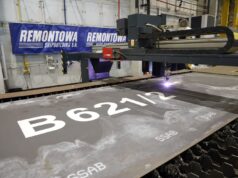
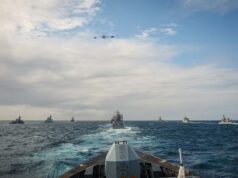


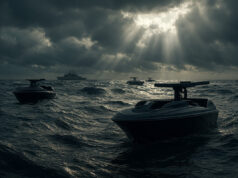
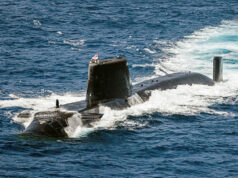

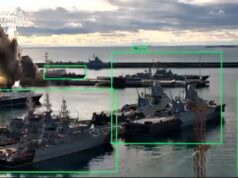
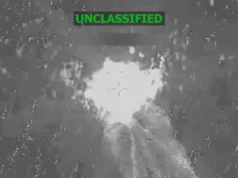


They can send one to patrol Gibraltar.
Totally agree with James !!
I’ve not seen it only going by what I see on here but I take it the spanish are annoying? And I understand the Royal Navy as a smalled patrol boat there which gets into conflicts with Spanish police boats?
Yes thats right , we get daily incursions by Spanish state vessels and they ignore RN warning !
Yesterday morning we had the Spanish navy patrolling Gibraltar British territorial waters they received warning from the RN to leave BTW and they just ignored !
Then we need to send one of these then! I understand now and again the Spanish ambassador in UK always gets called to visit foreign office.
Yes James Gibraltar really need one to defend British Gibraltar !
Spanish ambassador flushes down the toilet any complaint from
The UK over Gibraltar
This would be good news if they where in addition too, not replacing, the only 10 year old existing 3 River Class.
If they are replacing the Rivers…maybe, Gib should think about buying a couple for themselves….not sure if they are allowed to though.
It would probably be cheaper for Gib to purchase new OPVs similar to the ones built for Brazil at £44m than the RN’s at £100m+. The cost of which has been a whole different discussion though!!
Sincerely hope these are additions rather than replacements for the current three. Totally agree one should be permanently based in Gib. It appears to go noticeably quieter when the RN are present in those waters
Yes – do they pay UK tax? I thought they were a tax haven… http://www.taxresearch.org.uk/Blog/2013/08/17/the-uk-declares-economic-warfare-on-its-gibraltar-tax-haven/
If these are in addition to the existing four River class then that will be a good start at mitigating the dire shortage of hulls available to the fleet.
I do fear that they are under armed and rather slow which will limit their utility as fleet units in place of a Frigate or Destroyer for low intensity operations.
The cost too much, the changes made to the existing design do not cost the massive increase in cost.
We do need to deploy an OPV to Gibraltar, one to Cyprus and one to the Caribbean, but if this will ever happen I do not know.
Can the “30mm automatic small calibre gun” take
Out a sea skimming missile? Or a fast attack jet?
Does it have sub surface sensors?
I fear it is just a glorified gun boat.
I think you guys miss the point, even if we put the whole royal navy inside Gibraltar waters, Spanish vessels would still play inside the waters. The only way they will stop is if we chase them out and if they don’t play ball we sink their ship, which would never ever happen. Spain is playing silly git with Gibraltar but neither us nor them have any desire to really escalate things beyond ‘annoying’
stop talking and sink the bastards, shades of Nelson eh !!!
china will copy your ship :v
China likely has already copied elements from this design since the Thai Navy bought a ship similar to these a few years ago.
Except the Thai navy ship has got some guns on it,ours are a joke,and don’t tell their OPV’s they are called HMS which makes them a warship
They’ve had plenty of time to copy them because they look remarkably like the T&T vessels that VT Shipbuilding designed and built 1 then they ended up as Amazonis class for Brazil, but for some reason when BAE sell them to our own MOD they treble in price!
Could do with one patrolling BGTW!!
Can’t build them a couple at a time?
Two are currently being built, this is the third, first will be commissioned next year I think
All 3 being built at the same time, at different stages of construction
Complement the river class, don’t replace. We’re short of ships as it is!!!
Hopefully their engines can take the heat.
Yes, John L Crowll, these are OPV’s so are designed for operations in UK and nearby waters. I’ve no doubt they will need to deploy to the Med and possibly the Gulf also, due to ever changing operational requirements, so I sincerely hope the lessons of the Type 45 destroyers have been learned!
Shane Ash
Only 3 !!!!!!!
3 to bolster the 4 we currently have, with increased capabilities using the things we’ve learnt by building the 3 Amazonas-class for the Brazilians and HTMS Krabi for the Royal Thai Navy.
7 isnt to bad i guess
Another two are to be ordered.
9 ..thats great news
Have you heard about Russians bombing a us base ??
Aren’t they just going to replace the 1st 3?
So what’s the armament on these then?
Pea shooter
Is it me or these under armed?
And here’s one we made earlier
This is old news? Look at the date Oct 7th 2015. ?
The article has been updated to reflect new information, relax.
Meanwhile in Canada….
That’s a ship
Do we still have any sailors to man ghem or have they been contacted out to Group 4 or Carillion?
Very well !
Picking up the comment Brian Aitkenhead made about being under armed, the Russian equivalent in the Caspian flotilla are armed with Tomahawk equivalent missiles
Would have been built on Time and to budget By Vosper Thornycroft apart that is from being a World class Build quality , you got what you got now
Saw the hull sections yesterday at Port Glasgow!
Bae distroyed shipbuilding in Enland with the British goverments blessing
Make the most of the OPV job because those T26’s aint materalising anytime soon 😉
Why, when they want independence?
Medway ?
Fee need more jets better jets right
And faster